February 9, 2015 | Lean
Top Ten Tips For Mastering Lean Manufacturing
 Lean provides a powerful production formula for doing more with less by working smarter. From the Japanese term “muda,” meaning waste, lean manufacuturing reduces activities that consume resources without lessening value to the customer. In other words, Lean optimizes manufacturing processes so as to generate maximum value for customers with the minimum amount of waste.
Lean provides a powerful production formula for doing more with less by working smarter. From the Japanese term “muda,” meaning waste, lean manufacuturing reduces activities that consume resources without lessening value to the customer. In other words, Lean optimizes manufacturing processes so as to generate maximum value for customers with the minimum amount of waste.
Lean Enterprise Institute further explains:
"The ultimate goal is to provide perfect value to the customer through a perfect value creation process that has zero waste."
Lean manufacturing shifts emphasis from optimization of separate and distinct organizational departments, technical systems, equipment, and other assets to optimization of product flows across departments, technologies, and assets to customers. This approach allows manufacturers to focus on streamlining product value flows over several connected processes rather than individual and isolated points on the product development line.
5 Lean Principles:
- Value: Customers define value in the form of certain benefits gotten from a product.
- Value stream: Create this value without waste.
- Flow: Flow work by streamlining value-added processes.
- Pull: Let customers pull value.
- Perfection: Pursue quality by making imperfections visible.
Lean Benefits:
- Eliminates waste
- Requires less manpower and human effort
- Reduces costs
- Keeps processes flowing
- Improves lead times
- Increases product quality
- Simplifies management of information systems
Tip #1: Have a strong lean improvement strategy
You'll need a solid plan and some attainable targets before implementing Lean. Utilize checklists and to-do lists, and you’ll always be working towards a goal. Look at every step in your process from the customer’s perspective: Is all that you’re doing something that he or she would be willing to pay for? If not, it is time to get back to the drawing board.
Tip #2: Take a lean tour
Sometimes we learn best by first witnessing the success of others. See the benefits of lean in action. It is not difficult to find organizations that will allow you to see their lean implementations (referred to as the Gemba walk). Take detailed notes of what is highly effective in their Lean implementations, ask questions, and get as much valuable information as you can in order to help you formulate you own Lean strategy for implementation.
Tip #3: Get (and stay) organized
Staying organized—and keeping your tools and equipment where they are easily accessible—will accelerate positive changes in your operations. Not only will it increase efficiency and reduce costs, but it will also help build support for subsequent phases of Lean.
Tip #4: Goal Setting
In order to get people motivated, they must value the goals set for Lean manufacturing. These goals must be challenging, yet obtainable for your employees. Further, always ask for feedback on these goals, as well as progress toward target attainment. Feedback should always contain measureable facts and figures.
Tip #5: Set realistic target dates
People, by nature, are goal-oriented and want to see that their actions are producing positive results. But if you’re not being realistic with your target goal dates, you are setting yourself up for failure from the beginning. Set small goals and reward yourself and your employees for each milestone accomplished.
Tip #6: Show results, not action items
It’s important that you post real results on your Lean board, not things that you’re going to do. You must be able to point out your successes if you are ever going to convince others that Lean really works.
Tip #7: Get the whole team on board
To get the greatest advantages out of Lean, the entire organization should adopt and promote its practices, and extend its influence to suppliers as well. You must involve the people who are the closest to the work and you must get support from senior management as well.
Tip #8: Discard conventional fixed ideas
Part of problem solving is thinking “outside of the box.” Encourage fresh perspectives and ingenuity in your team in order to develop innovative ways to foward Lean manufacturing without changing what is already efficient and successful. With such a rapidly evolving climate in manufacturing, sometimes conventional thought is what leads to the problem in the first place!
Tip #9: Don’t Just Talk About it, Do it!
Once you have a Lean strategy in place, put it into fast and thorough action. Naturally, implementation is what ultimately yields results and improvement. The last think you want is to devise and formulate a Lean campaign that then sits on the shelf and collects dust. Run with your Lean plans as soon as you have everything nailed down.
Tip #10: Concentrate on bad processes, not people
By concentrating on the processes and building continuous improvement, you will have the culture change that you are looking for. Also, correct mistakes immediately. Don’t wait for the next shift, the weekend or maintenance to do it.

Leave a Comment